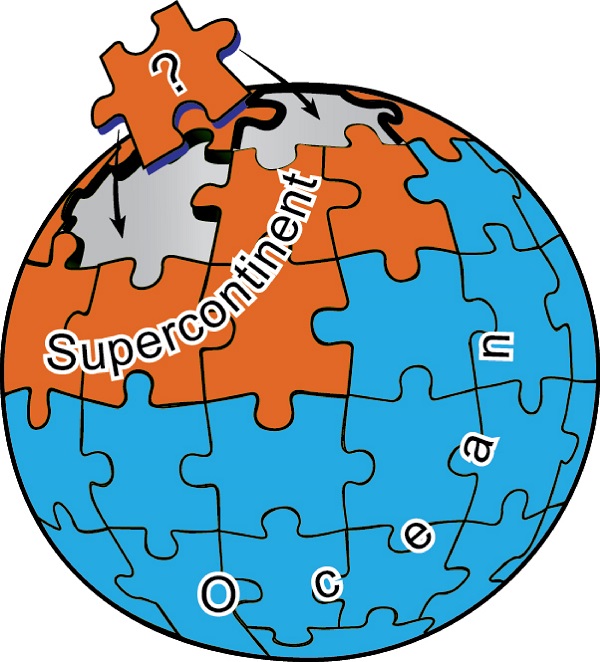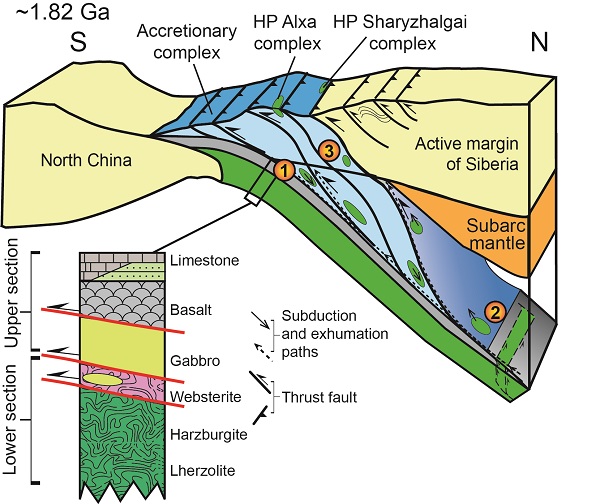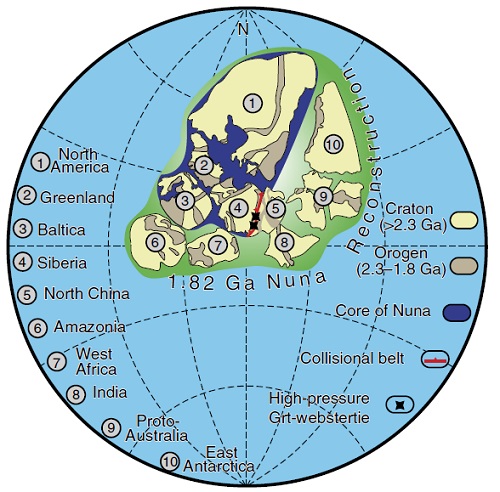|
Rock-Mineral Preparation and Analysis
|
Press
New Configuration of Nuna: a north China-Siberia connectionThrough the action of plate tectonics, dispersed continents can merge into a single supercontinent. Three supercontinents are known to have existed in the Earth's history. These are Nuna, which formed at ~1.8 billion year ago, Rodinia at ~800 million year ago, Pangaea at ~300 million year ago. Reconstructing a past supercontinent is like joining together the pieces of a jigsaw puzzle (Fig. 1). The older a supercontinent is, the more difficult it is to reconstruct due to the fact that only a few reliable pieces of evidence have been preserved. Therefore, to reconstruct Nuna is one of the most largest challenges in solid Earth science. The connection between the North China Craton (NCC) and contiguous cratons is important for the configuration of the Nuna supercontinent. This is because previous researchers have variably interpreted the NCC as having been in direct contact with Baltica, North America, Siberia, India or Amazonia. In recent work, Wan and his colleagues document a new Paleoproterozoic high-pressure (HP) complex. The rock associations with their structural relationships and geochemical affinities are comparable to those of supra-subduction zone ophiolites, and supported by subduction-related signatures of gabbros and basalts. Wan and his colleagues propose that a ~1.90 Ga oceanic fragment was subducted and exhumed into an accretionary complex along the northern margin of the NCC. Presence of a coeval complex in southern Siberia favors a North China-Siberia connection at ~1.82 billion years ago (Fig. 2). The new Paleoproterozoic reconstruction (Fig. 3) more satisfactorily explains: 1. the active HP margin of the northern NCC against the coeval HP active margin of the southwestern margin of Siberia, and 2. the position of the NCC against India. The new reconfiguration mainly focuses on the framework of Paleoproterozoic Nuna and later positions of continental blocks may be substantially different due movements of plates over time.
Fig.1 Reconstructing a past supercontinent is like joining together the pieces of a jigsaw puzzle
Fig.2 The tectonic setting of the Alxa HP Grt-websterite.
Fig.3 Reconstructed 1.8 Ga Nuna and sketch map of the North China Craton. Contact:
|
-
SIMSSecondary Ion Mass Spectrometer Laboratory
-
MC-ICPMSMultiple-collector ICPMS Laboratory
-
EM & TEMElectron Microprobe and Transmission Electron Microscope Laboratory
-
SISolid Isotope Laboratory
-
StIStable Isotope Laboratory
-
RMPARock-Mineral Preparation and Analysis
-
AAH40Ar/39Ar & (U-Th)/He Laboratory
-
EMLElectron Microscopy Laboratory
-
USCLUranium Series Chronology Laboratory
-
SASeismic Array Laboratory
-
SEELaboratory of Space Environment Exploration Laboratory
-
PGPaleomagnetism and Geochronology Laboratory
-
BioMNSFrance-China Bio-mineralization and Nano-structure Laboratory




